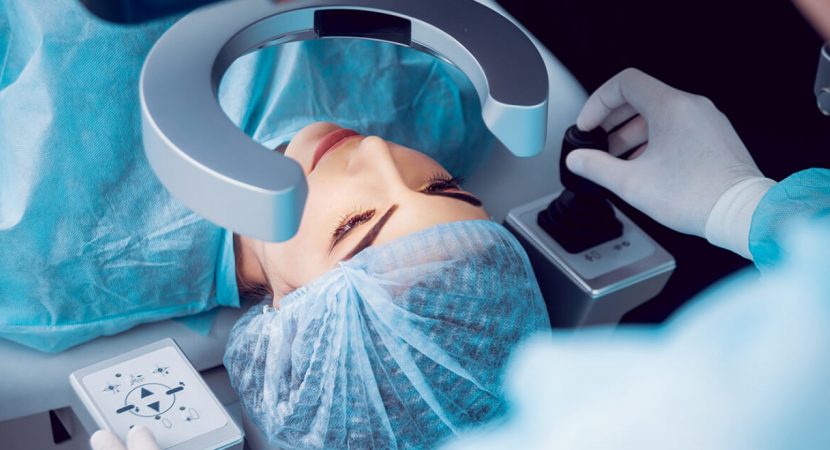Lasik eye surgery is becoming increasingly popular as the preferred surgical technique for improving vision. Lasik vision correction surgery can completely eliminate or at least significantly reduce a person’s dependence on contact lenses or glasses for 20/20 vision.
Lasik procedure
Before performing a LASIK for Myopia procedure, an ophthalmic surgeon must evaluate the patient’s compatibility and risk factor for Lasik surgery. The first thing a doctor does is collect a complete history of a person’s health, after which a full eye exam is performed. Only after a person is determined eligible for Lasik eye surgery does the doctor discuss the various options available. Of the various methods of surgical Lasik vision correction, the most common is the use of an excimer laser. This method has been used in vision correction surgery since 1987. The excimer laser shapes the cornea, allowing the surgeon to obtain the best surgical results.

Vision correction surgery
Lasik vision correction surgery is the best option for people with moderate to mild vision problems. Nearsightedness and farsightedness can be improved by Lasik surgery, which is a painless procedure and produces almost immediate vision improvement.
Eye surgery results
Lasik eye surgery results are greatly improved by the ability to profile the cornea with an excimer laser. There are no guarantees for any surgery and Lasik surgery is no exception. While there is no guarantee that you will have perfect vision after surgery, there is an estimated 90% success rate. 100% successful Lasik eye surgery eliminates the need for any other corrective lenses. But this is not the case for all. Some patients still require corrective lenses even after Lasik surgery.
Lasik eye surgery involves the creation of an extremely thin round flap on the outer layer of the cornea. This is done with a tool called microcreata. The microcreatoma performs the same functions as the excimer, but the excimer has been found to be more accurate and more successful. After cutting the flap, the cornea is outlined. This means that the flap is folded back and the surgeon proceeds to remove the corneal tissue with an excimer. The excimer laser removes small pieces of corneal tissue in one go using cool ultraviolet ray.




